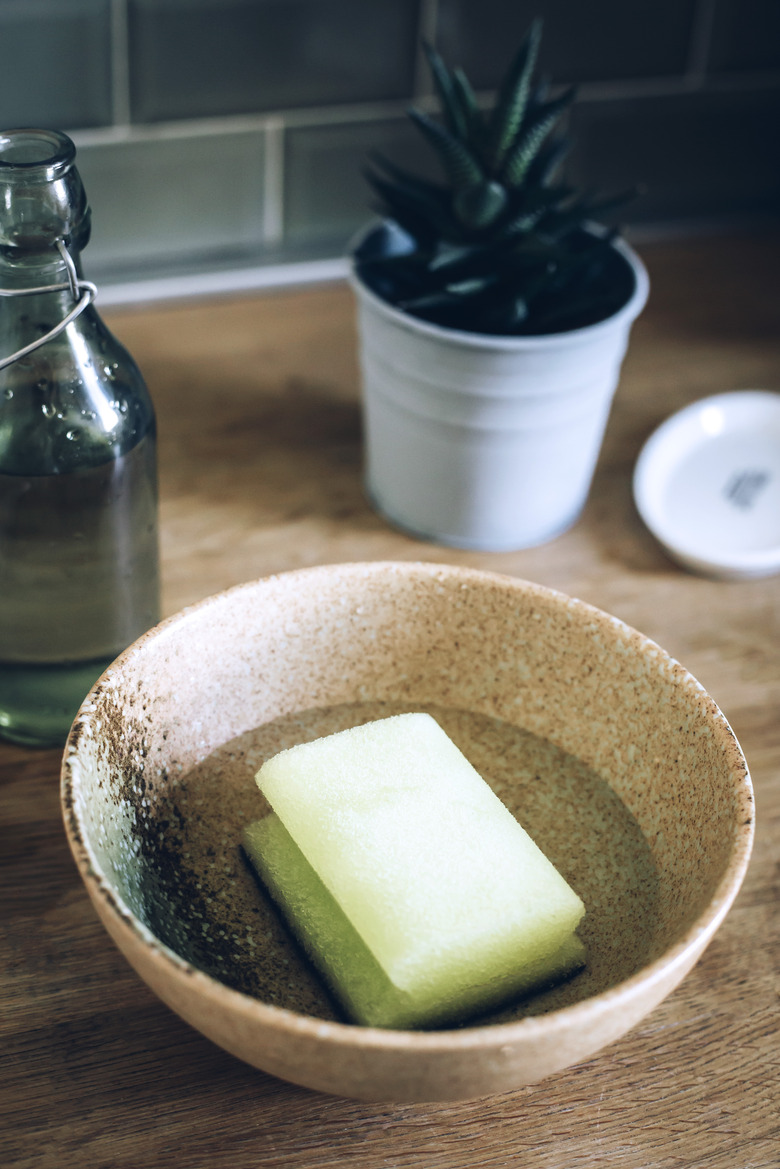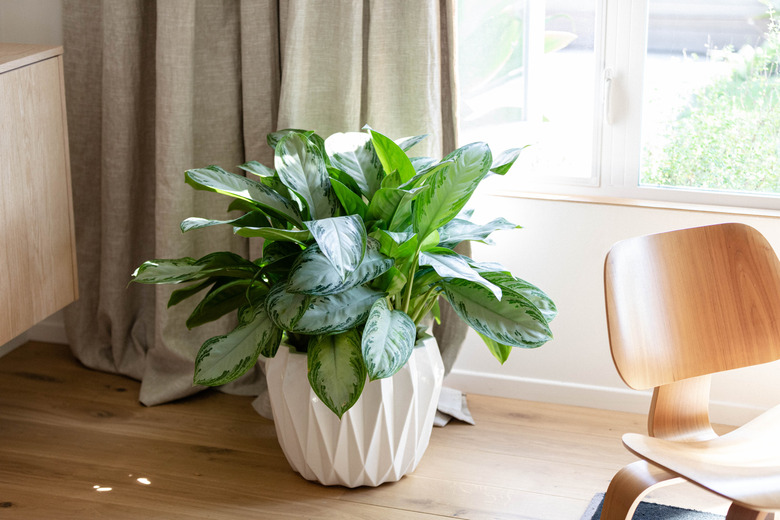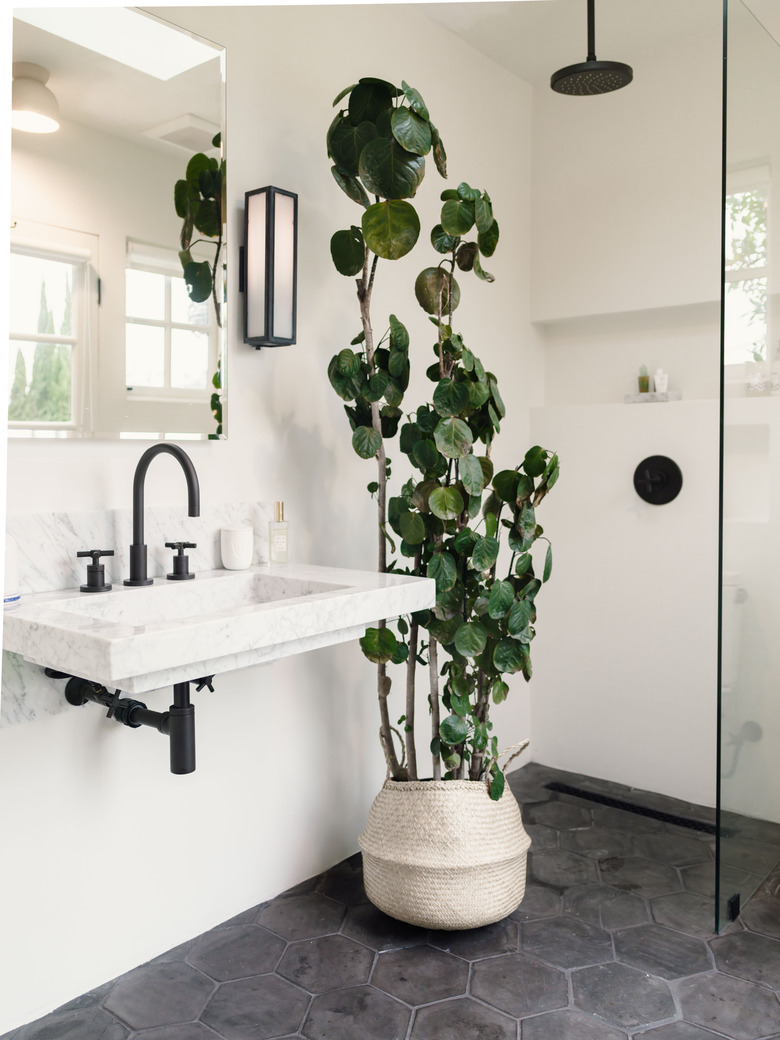Your Cleaning Routine Really Should Include THIS Step
Cleaning your home can be a round-the-clock job. You've got to consider what to clean, how often you need to clean, and which cleaning solutions to use. (It's why we have a whole series on Hunker devoted to making things sparkle called Squeaky.)
However, in addition to the usual suspects that need regular attention (your stove, toilet, sink, floors, to name a few), there's another area you really should include in your cleaning routine: your plants.
It's easy to skip this important step, but your plants will pay the price.
Washing, wiping down, or dusting the leaves of your houseplants not only spruces up their appearance, it's actually vital in keeping them healthy and happy. Not sure how? Don't worry, we'll walk you through the hows and whys as well as the best timing.
Clean Leaves for Healthy Plants
Clean Leaves for Healthy Plants
If you ask us, any room looks better with a few plants, especially when they are vibrant and healthy. If the leaves are shiny clean and free of dust, every houseplant is a rockstar.
But while your plants can make your home more attractive, their botanical function is more complex. Each plant is actually an efficient, energy-producing machine, taking in sunshine through their leaves and turning it into food through photosynthesis. Oxygen is a byproduct of photosynthesis, and the plant releases oxygen gas through stomata, microscopic pores in the underside of their leaves. Plants are able to open their stomata to release the oxygen and then close them. When the leaves are dusty or dirty, it can interfere with this process.
Plants also "exhale" water vapor through their stomata in a process called transpiration. Transpiration creates the negative pressure that draws water up the plant's stem from its roots to its foliage. Dirty leaf surfaces slow transpiration, which can put the plant's health in danger. Outdoors, Mother Nature cleans plants with rain, but houseplants have to rely on you, so it's important to make cleaning them a regular part of your routine.
When to Clean Plant Leaves
When to Clean Plant Leaves
How do you know that it's time to clean your plant leaves? It's kind of like sweeping the floor. You may not have a regular scheduled time but when you see dirt you tracked in from the outdoors, you know it's time. Just so with plants: it is time to clean them when their leaves appear dirty or when you feel dust when you rub the foliage.
The timing depends a lot on the situation. If you live in a windy area near a dirt road and you keep your windows open, once a week is totally reasonable. City dwellers in calm locations might only clean once a month. It's probably a good idea to check your plant leaves every two weeks to see if a cleaning is in order.
How to Clean Plant Leaves
How to Clean Plant Leaves
Okay, we admit it right up front: cleaning plant leaves isn't hard, but it isn't necessarily easy either. Let's just say it can be tricky. That's because there are lots of different ways to get rid of that dust and not all of them work for every plant.
Selecting the right method of cleaning for each houseplant means that the plants will end up looking and feeling better. The most common options are spraying, washing with a soft cloth, and dusting with a brush or duster.
Showers for Houseplants
Showers for Houseplants
The easiest way to clean a houseplant is by giving them a shower. The idea is to let the water flow do the work of removing dust and dirt.
You can literally use the shower, or load up the tub with houseplants, and then spray them down, ideally with a detachable shower head. You can also hose down smaller plants in the kitchen sink. Check the temperature of the water first and adjust it to lukewarm. Either hot or cold water can shock or injure your plant leaves.
What about a shower outdoors? The hose works just fine on mild days if you adjust it to a spray function. And if a light rain is falling steadily, an hour outside can do the trick as long as the weather isn't too cold and there's little wind.
Washing With a Cloth
Washing With a Cloth
Some plants are just too big or heavy to be carried to the tub or the back deck for a shower. Think big rubber plants here or mature fiddle leaf fig trees. Even with someone helping you, moving a big plant into the shower can result in broken leaves or branches and will not be worth the risk.
Instead, get a soft cloth or a sponge without abrasive, dip it in tepid water and wipe, supporting the leaf with your other hand. If the plant leaves are really dirty, add a touch of dish soap to the water first. This method also works for plants with long, upright leaves like the snake plant.
Cleaning With a Duster
Cleaning With a Duster
Another option for too-big-to-move plants is to whisk off dust with a duster or a paintbrush. Be gentle and make sure you clean from one end of the leaf to the other. This method is also ideal for plants with sticky or hairy leaves or plants that just don't do well with water on their leaves (yes, we are looking at you, African violet!) Choose a smaller paintbrush to clean smaller, more delicate leaves or cacti with spines.


